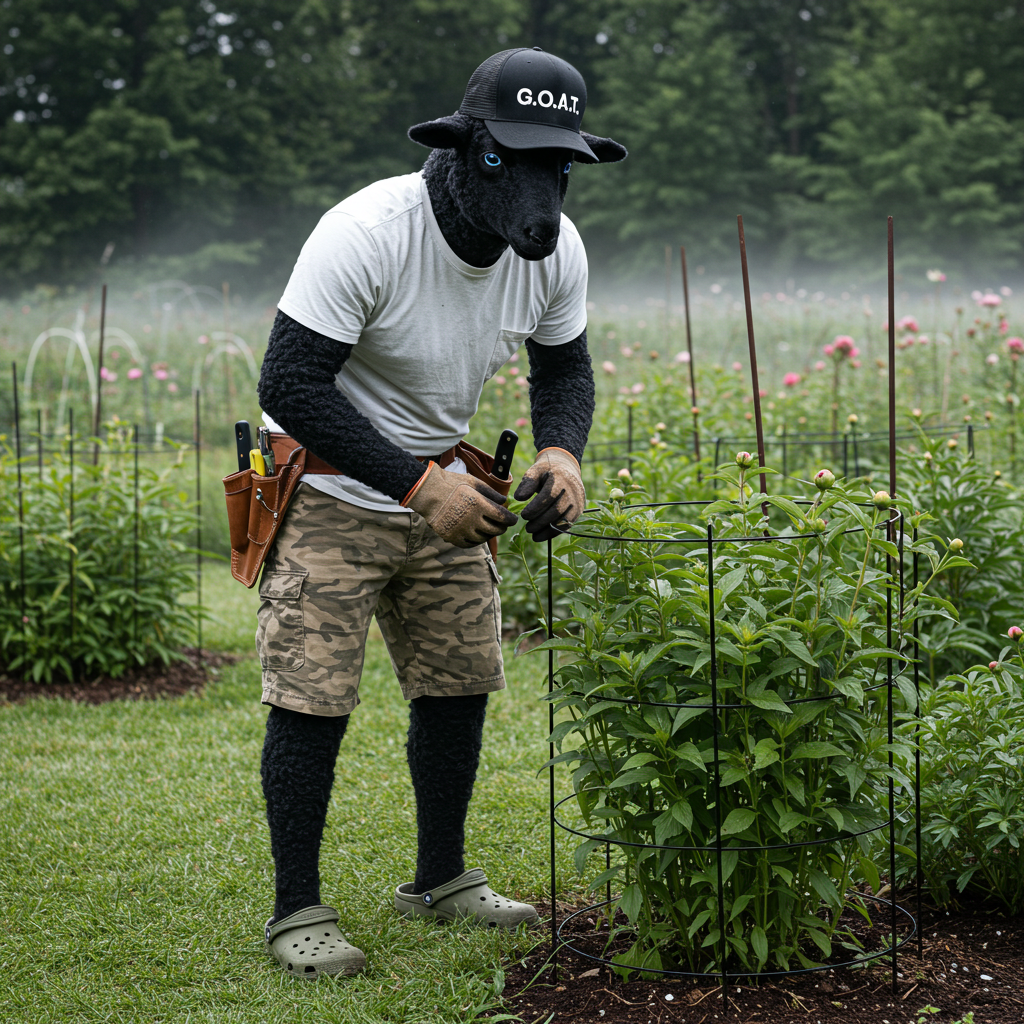Installing Plant Supports Before You Need Them

Here’s a little garden truth: if you wait until your plants are flopping to stake them, you’ve waited too long.
We’ve all been there. You’re out with your morning coffee, admiring your peonies or delphiniums, when suddenly—bam. A stem is splayed across the path like it fainted from sheer fabulousness. Or a thunderstorm rolls in, and by morning, your once-proud Baptisia is performing a full dramatic swoon.
This is why installing supports early—while the plants are still young and upright—is one of the kindest things you can do for both your garden and your back.
Let’s talk about why timing matters, what to use, and which plants benefit the most from a little early reinforcement.
🕰️ Why So Early?
Think of it like this: if you wait until a plant is heavy with buds or flopping after rain, you’re wrestling with a full-grown diva in heels.
Install supports early, and the plant just grows right into them—no drama, no damage, no zip ties holding everything together like emergency shapewear. Just a graceful, natural look and stems that stand tall even in a summer downpour.
🧰 Choose the Right Support for the Job
You don’t need fancy gadgets—just the right tool for the plant.
-
Peony rings – For rounded, heavy bloomers like peonies, rudbeckia, and baptisia. Place the ring while growth is still emerging through the crown.
-
Grid or grow-through supports – Great for clump-forming perennials like monarda, asters, and achillea.
-
Single-stake supports – Use bamboo, metal rods, or decorative stakes for tall growers like delphiniums, lilies, and foxgloves.
-
Cages – Not just for tomatoes! Use them for floppy salvias or spreading sedums early in the season.
-
DIY options – Twigs, twiggy branches, or even upside-down baskets can offer support and cottage charm.
🌿 Plants That Appreciate a Head Start
A few familiar favourites that are known to appreciate a little structural support:
-
Peonies – Especially doubles. Too much beauty, not enough stem.
-
Delphiniums – Tall and top-heavy, like the prom queen of perennials.
-
Baptisia – Lush early growth + heavy bloom = guaranteed flop after rain.
-
Achillea – Especially taller varieties like ‘Sassy Summer Sunset’.
-
Monarda – Can get top-heavy in full bloom and tends to splay.
-
Sedum ‘Autumn Joy’ – Yes, even this one can split down the middle late in the season.
-
Phlox paniculata – Gets tall and lush, especially in rich soil.
Support doesn’t just keep things upright—it helps air circulate, which can prevent disease. (Looking at you, powdery mildew.)
✂️ Installation Tips
-
Don’t wait until it’s floppy. Install when growth is around 6–10" tall.
-
Gently guide stems through supports as they grow—no force needed.
-
Use soft ties if needed (twine, jute, or cloth strips—nothing that will cut into the stems).
-
Camouflage with foliage. Early supports will disappear as plants fill in.
🎯 Final Thoughts: Plant Supports Are Self-Care for the Garden
Supporting your plants before they fall isn’t just smart—it’s kind. It’s like putting on sunscreen before the beach day, or stretching before your shovel session. You’re not overthinking it—you’re just thinking ahead.
So this week, grab your coffee, your supports, and maybe a helper if they come with snacks. Wander your beds, peek at what’s popping up, and ask: Who might need a little lift this year?
Your midsummer self—and your upright peonies—will be so glad you did.

